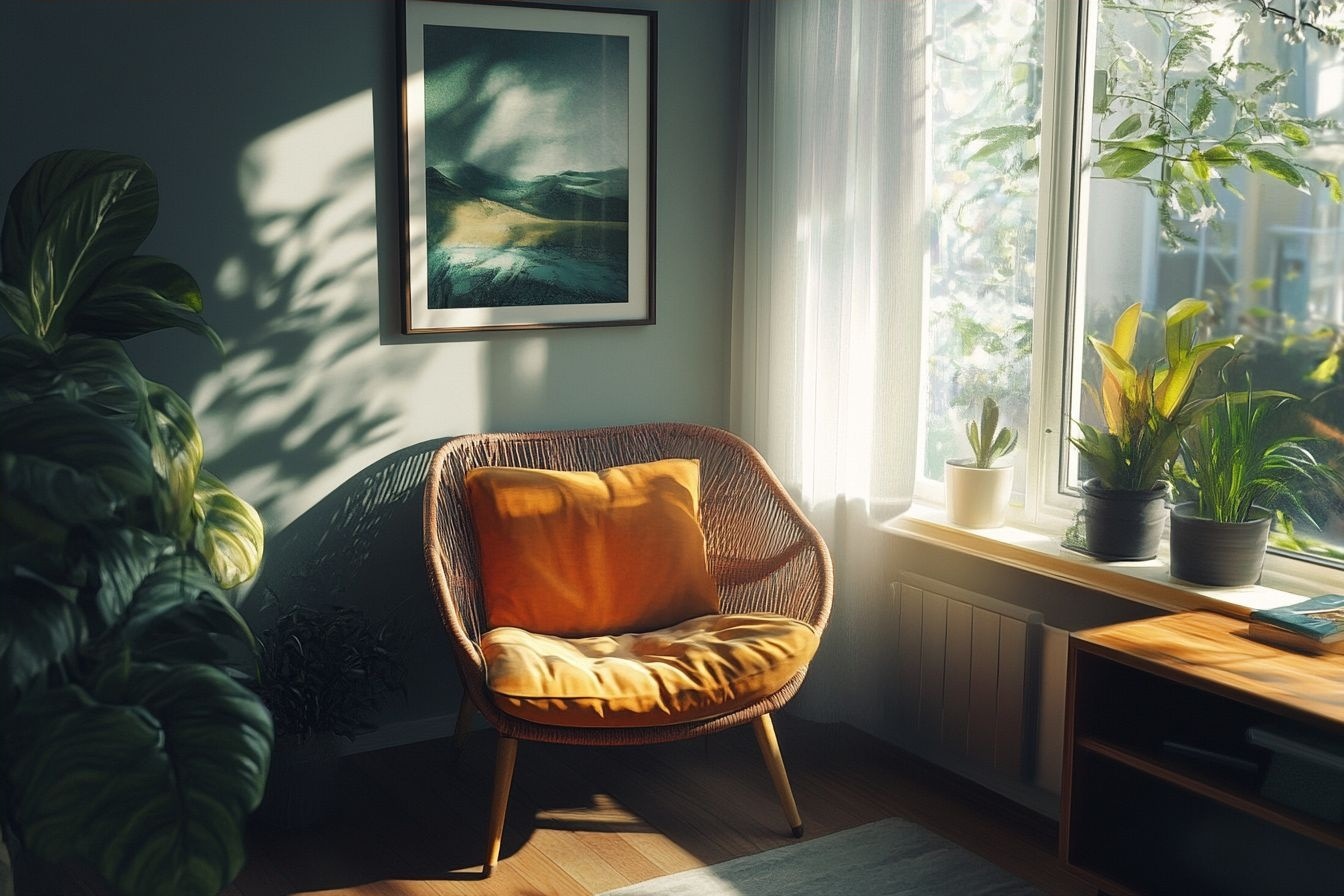Harmonizing Feng Shui with Moroccan Aesthetics: A New Wave in Home Design
The fusion of ancient Chinese spatial philosophy with the vibrant allure of North African decor is reshaping modern interiors. This unexpected blend marries the tranquil flow of Feng Shui with the rich textures and patterns of Moroccan design, creating spaces that are both energetically balanced and visually captivating. As homeowners seek to infuse their living spaces with meaning and cultural depth, this innovative approach offers a fresh palette for self-expression and harmonious living.

The marriage of these two styles began as designers and homeowners sought ways to create spaces that were both energetically harmonious and visually stimulating. The key was finding common ground in the principles of both traditions while allowing their unique characteristics to complement each other.
Balancing Act: Yin and Yang in Color and Texture
One of the fundamental concepts in Feng Shui is the balance of yin and yang energies. In the context of Moroccan-inspired Feng Shui, this translates to a careful balance of colors and textures. The vibrant hues typical of Moroccan decor—deep blues, rich reds, and warm oranges—are tempered by the more subdued tones favored in Feng Shui, such as earthy browns and soft greens.
Textures play a crucial role in this fusion. The plush carpets and intricate tilework of Moroccan interiors are balanced by smooth surfaces and natural materials like wood and stone, which are staples in Feng Shui design. This interplay creates a sensory experience that is both grounding and invigorating.
The Flow of Chi Through Moroccan Arches
In Feng Shui, the flow of chi throughout a space is paramount. Interestingly, the iconic arched doorways of Moroccan architecture align perfectly with this principle. These graceful curves guide energy smoothly from one room to another, avoiding the harsh angles that are believed to create negative energy in Feng Shui.
Designers are incorporating these arched elements not just in doorways, but in mirrors, shelving units, and even in the shapes of furniture. This subtle architectural feature becomes a unifying element that enhances both the aesthetic appeal and the energetic flow of the space.
Mindful Placement of Moroccan Accents
The art of placement is crucial in Feng Shui, and this principle extends to the incorporation of Moroccan elements. Instead of overcrowding a space with ornate pieces, which could disrupt energy flow, designers are choosing key Moroccan accents and positioning them thoughtfully.
A strategically placed Moroccan lantern, for instance, can serve as a focal point while also enhancing the light quality of a room—a critical aspect of good Feng Shui. Similarly, a carefully positioned Moroccan-inspired room divider can create separate functional areas within a larger space without blocking the flow of chi.
Nature’s Influence: Bringing the Outside In
Both Feng Shui and Moroccan design share a deep appreciation for nature, albeit expressed differently. Feng Shui emphasizes the importance of natural light and the presence of living plants to purify and energize a space. Moroccan design often incorporates natural motifs in its patterns and uses materials like clay and natural fibers.
In this fusion style, large windows draped with sheer, flowing fabrics allow ample natural light while evoking the airy feel of a Moroccan riad. Potted plants, particularly those with rounded leaves which are favored in Feng Shui, are displayed in colorful Moroccan-inspired planters, marrying form and function.
The Power of Symbols and Patterns
Symbols play a significant role in both Feng Shui and Moroccan design. In Feng Shui, certain symbols are believed to attract specific types of energy. Moroccan design is rich with symbolic patterns, often derived from Islamic art and architecture.
This fusion style thoughtfully incorporates symbols from both traditions. For example, the Hamsa hand, a popular Moroccan motif believed to ward off the evil eye, might be displayed alongside a traditional Feng Shui ba gua mirror. Geometric patterns common in Moroccan tiles are used sparingly, creating focal points that draw the eye without overwhelming the sense of calm that Feng Shui promotes.
Crafting Personal Sanctuaries
Perhaps the most compelling aspect of this design fusion is its ability to create deeply personal spaces. By combining the introspective nature of Feng Shui with the expressive qualities of Moroccan design, homeowners can craft environments that not only look beautiful but also feel profoundly right.
This approach encourages a mindful curation of possessions, where each item is chosen not just for its aesthetic value, but for its energetic contribution to the space. The result is a home that tells a unique story, balancing cultural richness with personal meaning and energetic harmony.
As we continue to seek ways to make our homes more than just shelters, but true reflections of our inner selves and aspirations, the fusion of Feng Shui and Moroccan design offers a compelling pathway. It reminds us that our living spaces can be both a canvas for creative expression and a tool for nurturing our well-being, creating environments that are as nourishing to the soul as they are pleasing to the eye.





